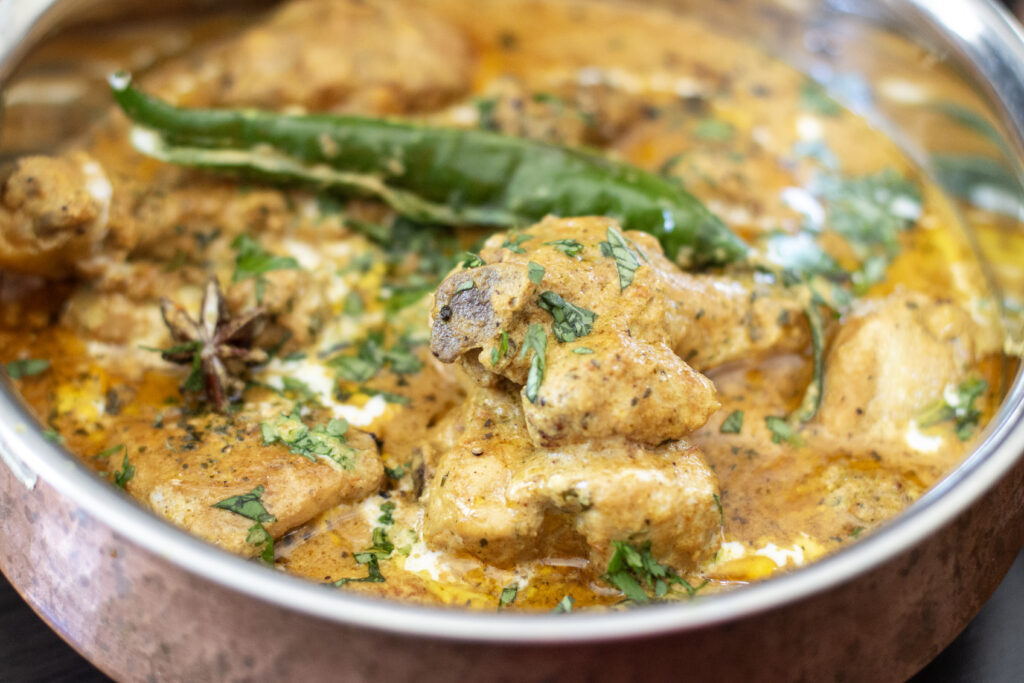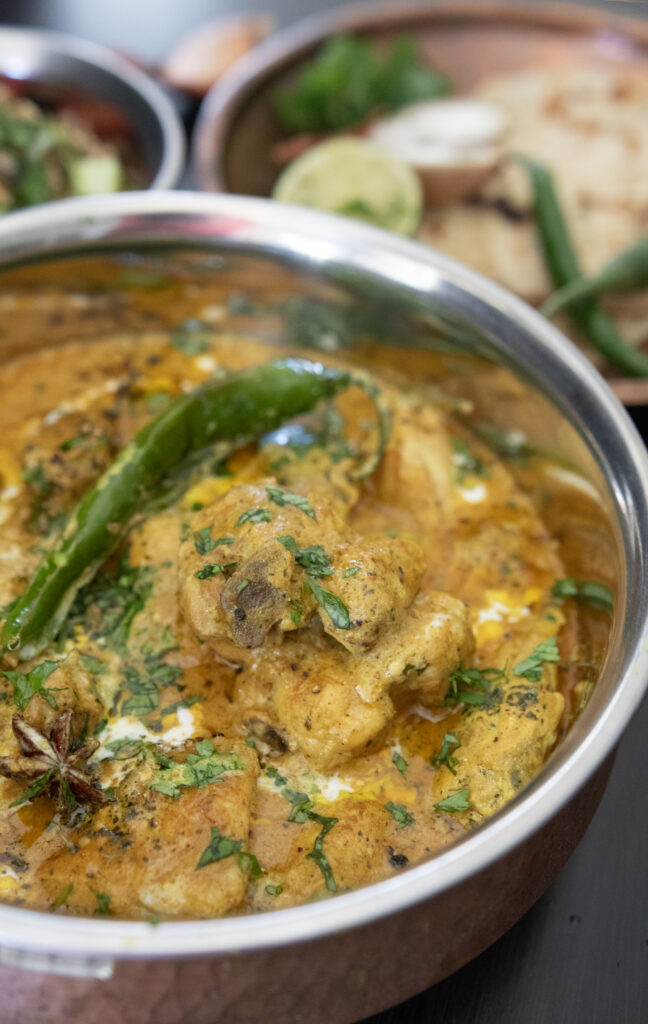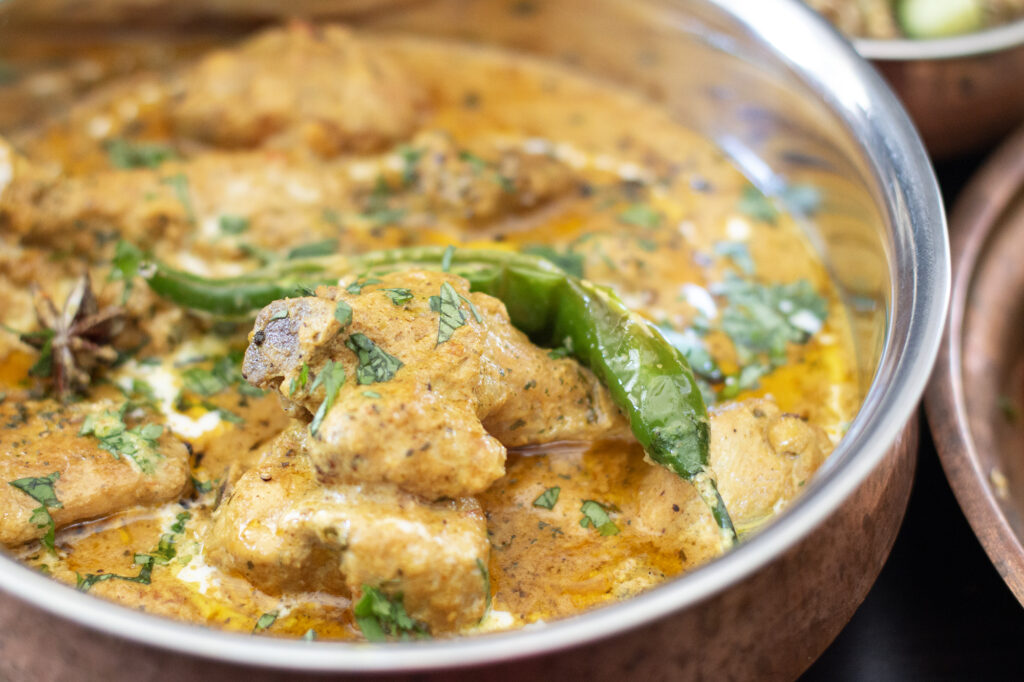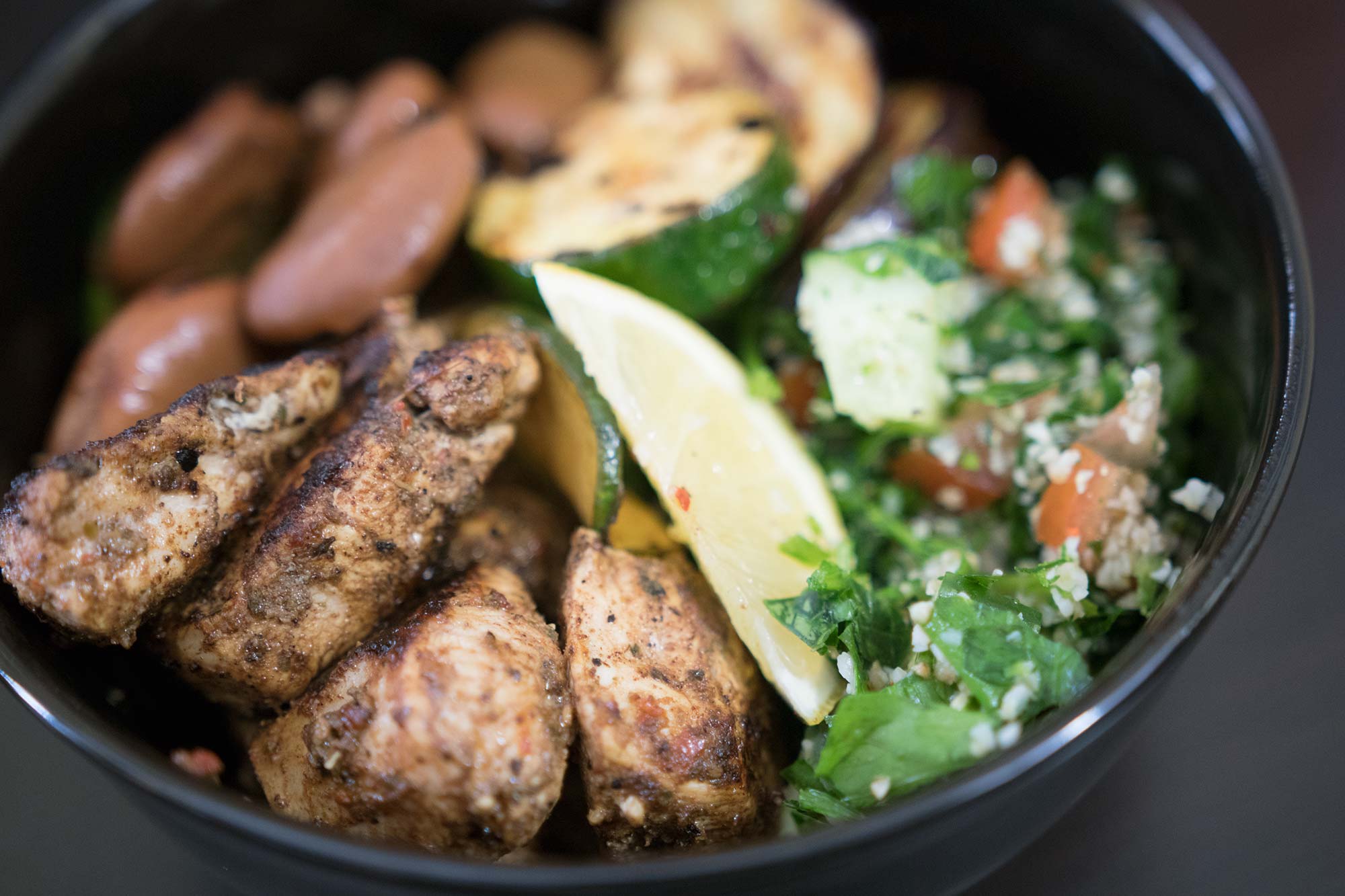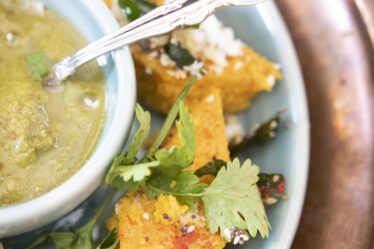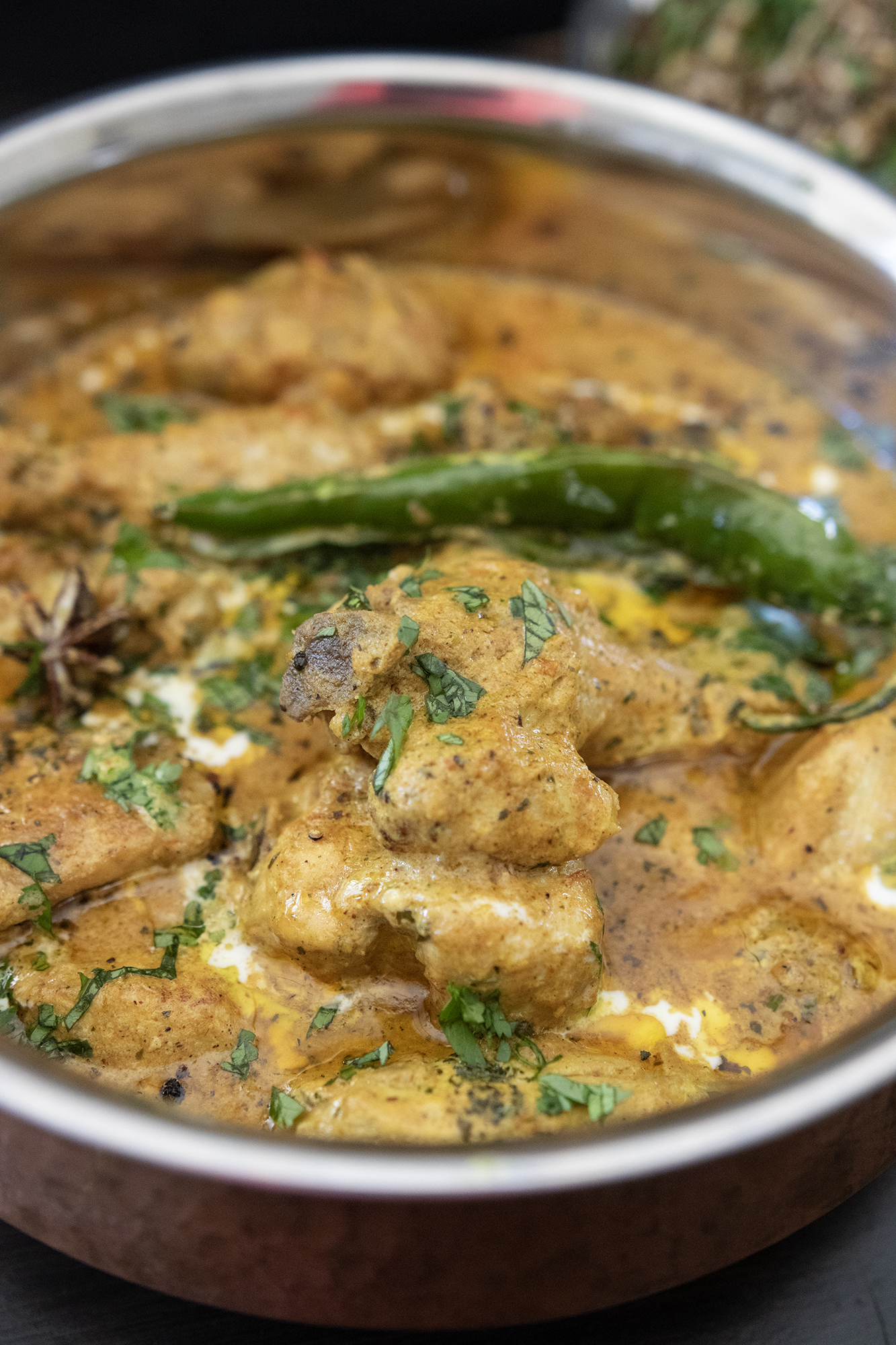
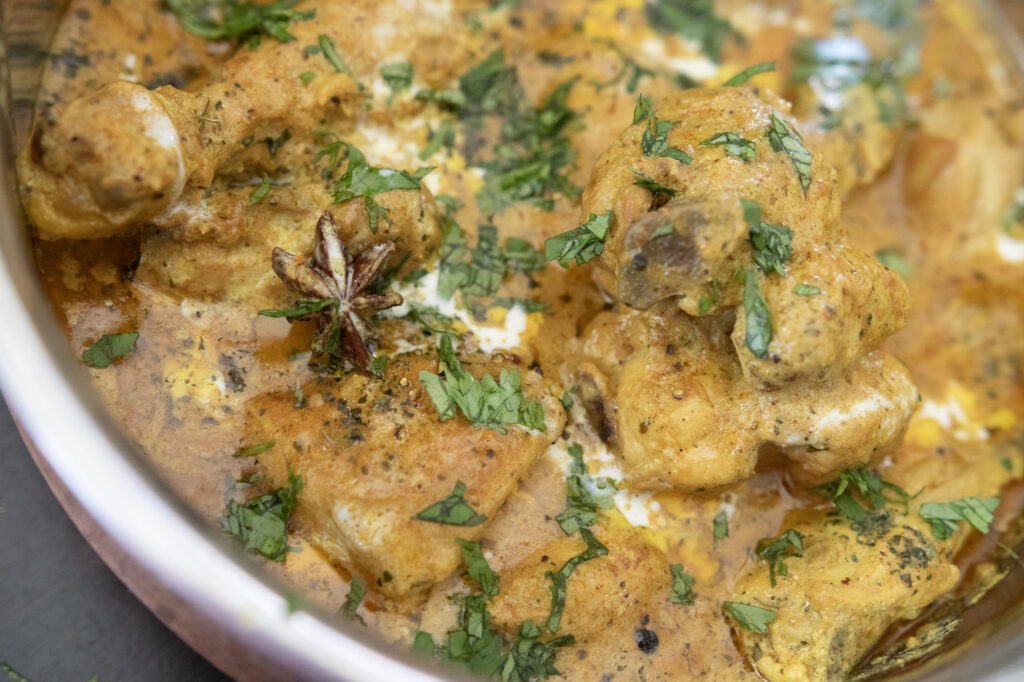
Chicken Mumtaz is a rich and flavorful Indian dish known for its creamy, mildly spiced, and aromatic gravy. It’s said to have been inspired by Mughlai cuisine and is often associated with royal flavors, using ingredients like cream, nuts, and aromatic spices.
The exact historical origins of Chicken Mumtaz are somewhat murky, as it doesn’t appear to be a dish with deep roots in classical Indian or Mughal cookbooks. However, the name “Mumtaz” suggests a connection—at least symbolically—to Mumtaz Mahal, the beloved wife of Mughal Emperor Shah Jahan, in whose memory the Taj Mahal was built.
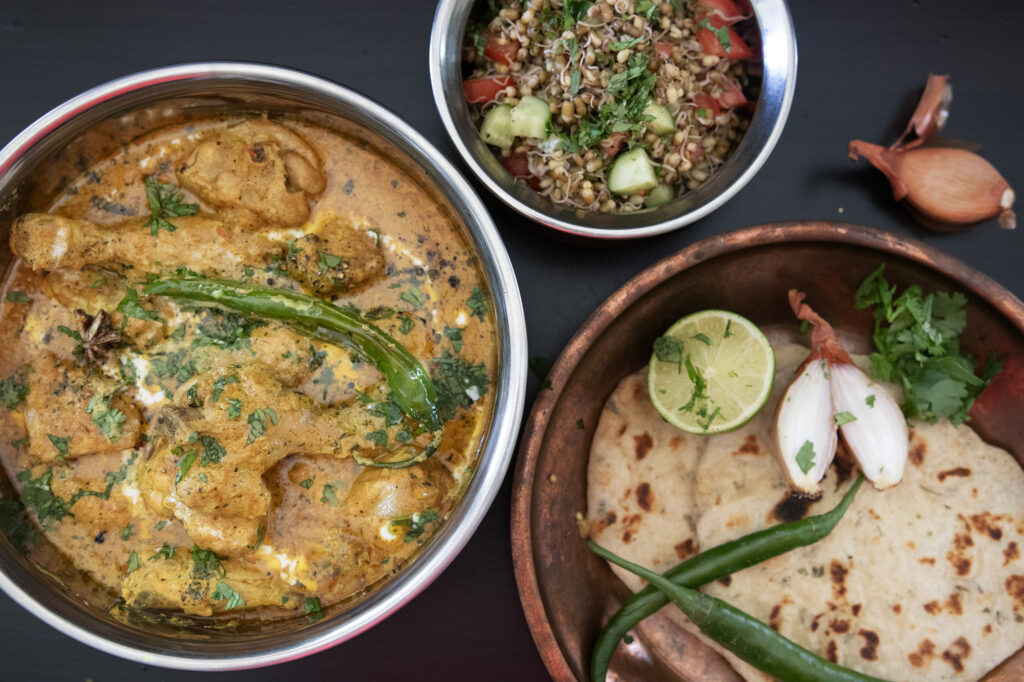
Here’s a breakdown of the likely history and cultural inspiration:
🏛️ Symbolic Connection to Mumtaz Mahal
- While there is no documented evidence that Mumtaz Mahal herself had anything to do with this dish, the name “Chicken Mumtaz” likely draws on her association with royalty, elegance, and richness.
- Much like “Shahi” or “Mughlai” dishes, the name gives the dish a regal flair, hinting at opulence, creaminess, nuts, and spices—hallmarks of Mughal cuisine.
🍽️ Influence of Mughlai Cuisine
- Mughlai cuisine, which developed in the kitchens of the Mughal emperors, is famous for its luxurious ingredients: cream, butter, saffron, dried fruits, and rich spice blends.
- Chicken Mumtaz often includes yogurt-based marinade, cashew paste, cream, and aromatic spices, which are consistent with that tradition.
- It’s likely a modern interpretation or evolution of Mughlai-style dishes like Chicken Korma or Butter Chicken, tailored to suit contemporary Indian tastes.
🧾 Modern Restaurant Creation
- Many food historians and chefs believe Chicken Mumtaz is a restaurant-originated dish, created in the late 20th century, perhaps as a specialty item on North Indian or Mughlai restaurant menus.
- Some chefs name dishes creatively to enhance appeal, and “Mumtaz” would naturally evoke a sense of something rich, romantic, and culturally resonant.
In Summary:
Chicken Mumtaz is not a historical dish from the Mughal era, but a modern creation inspired by the elegance and richness associated with Mughal cuisine and the romantic legacy of Mumtaz Mahal.
